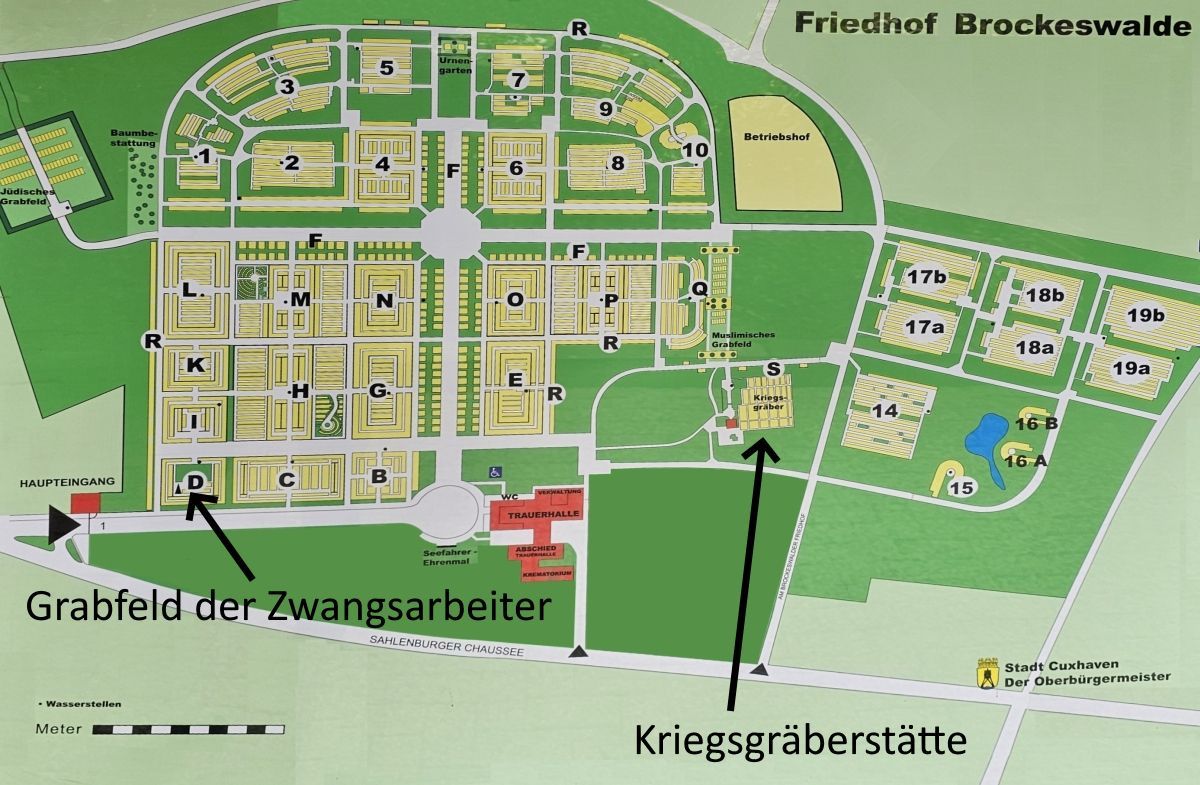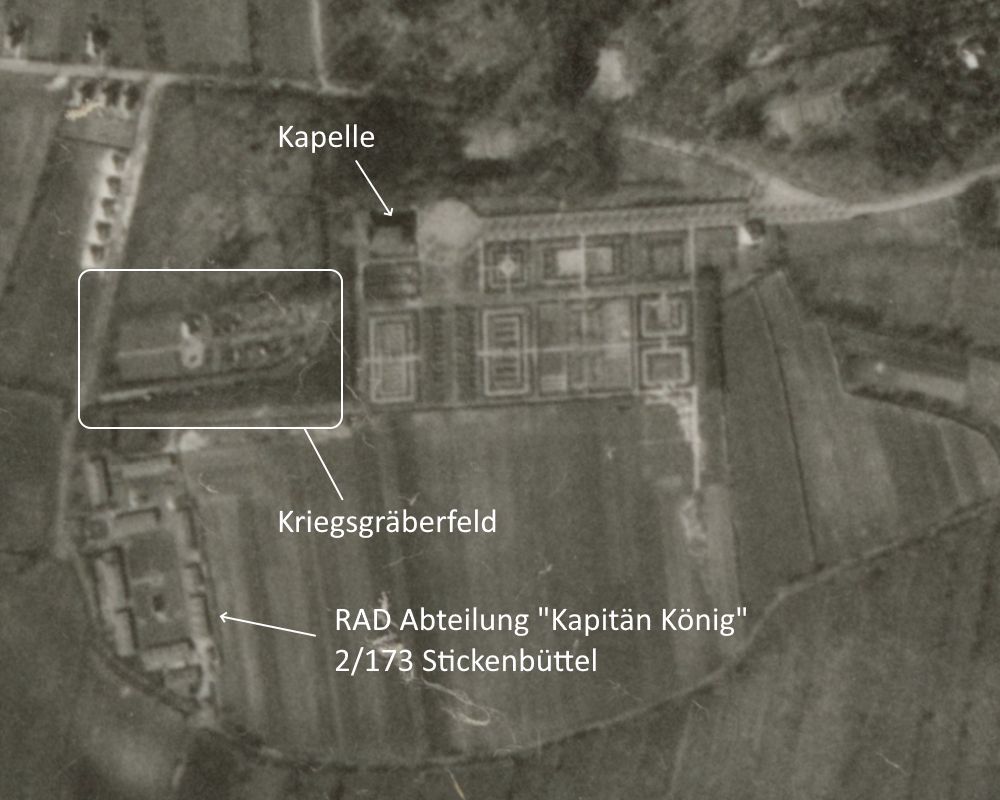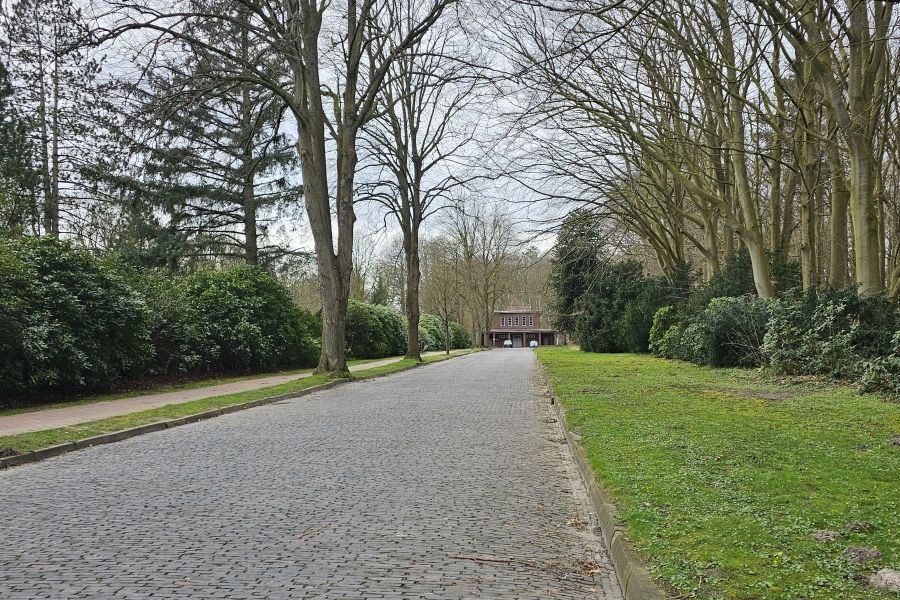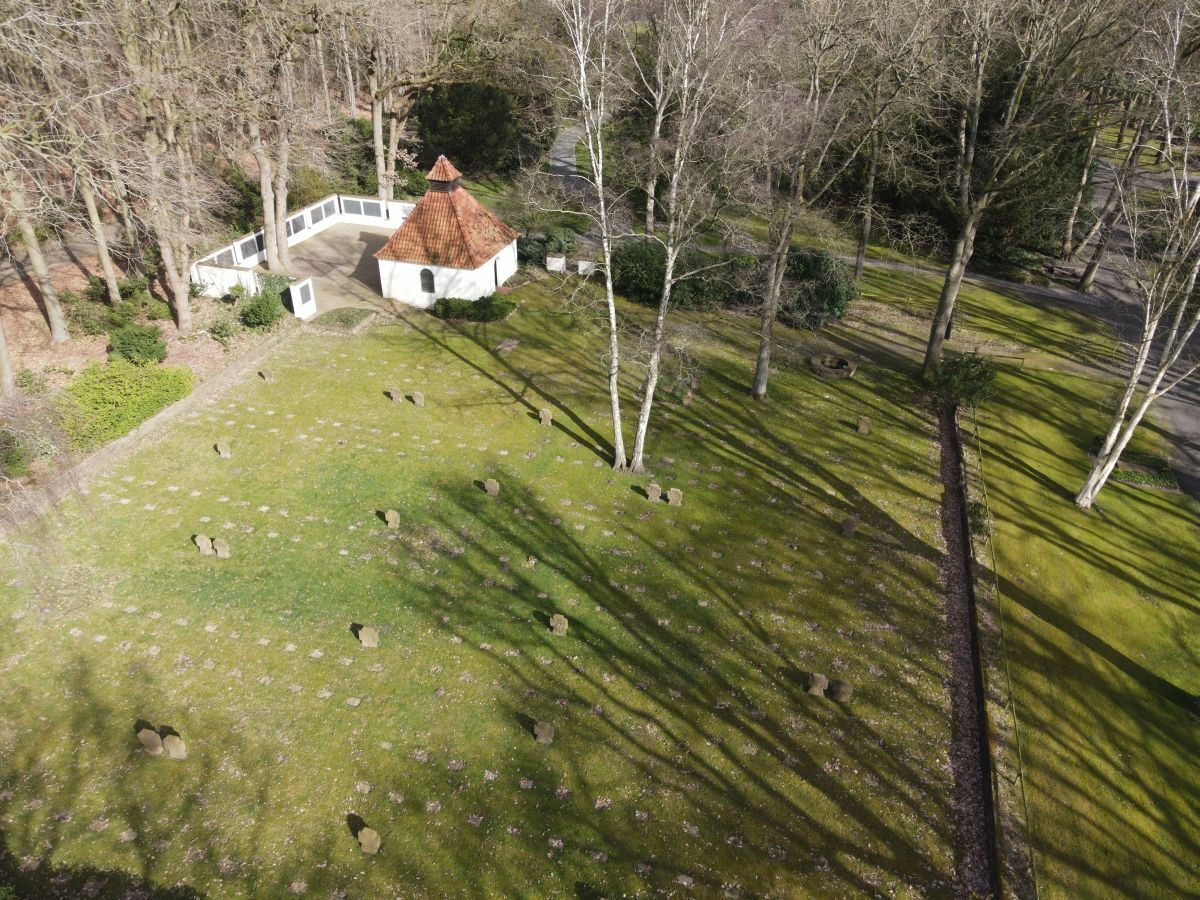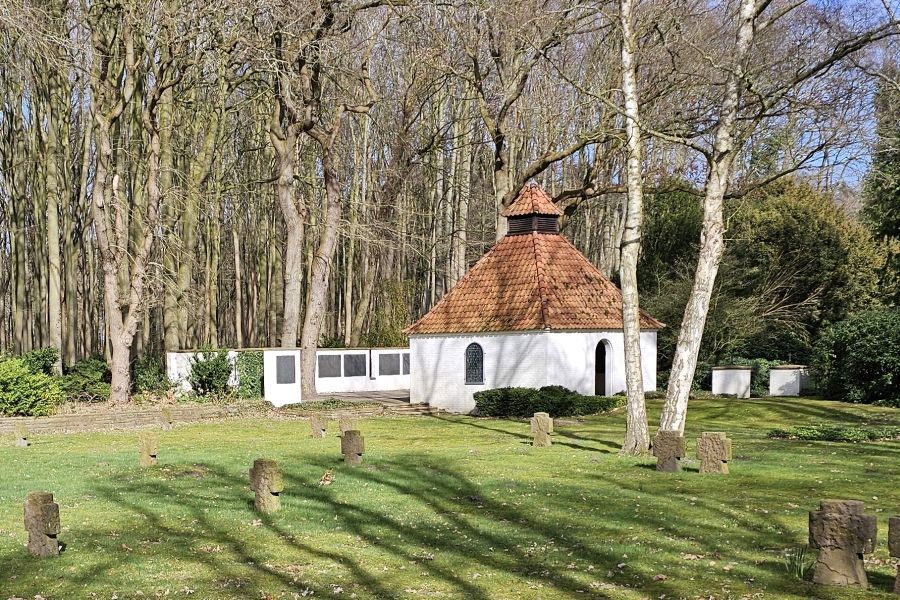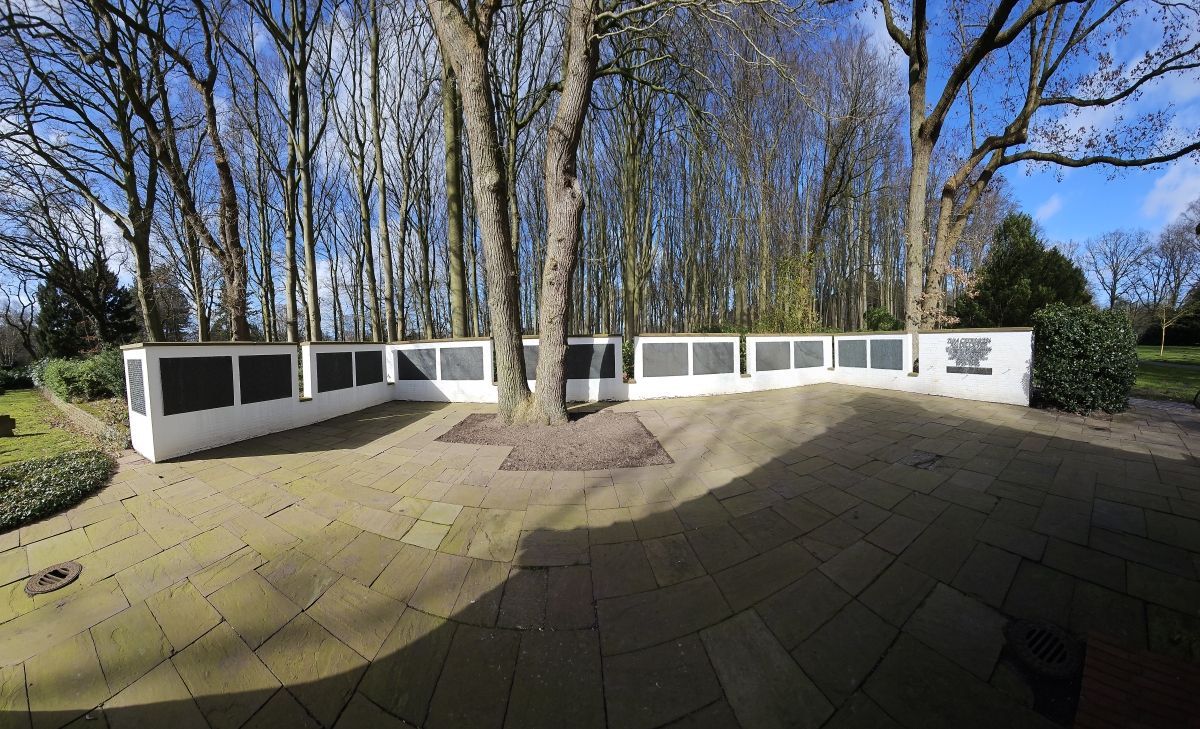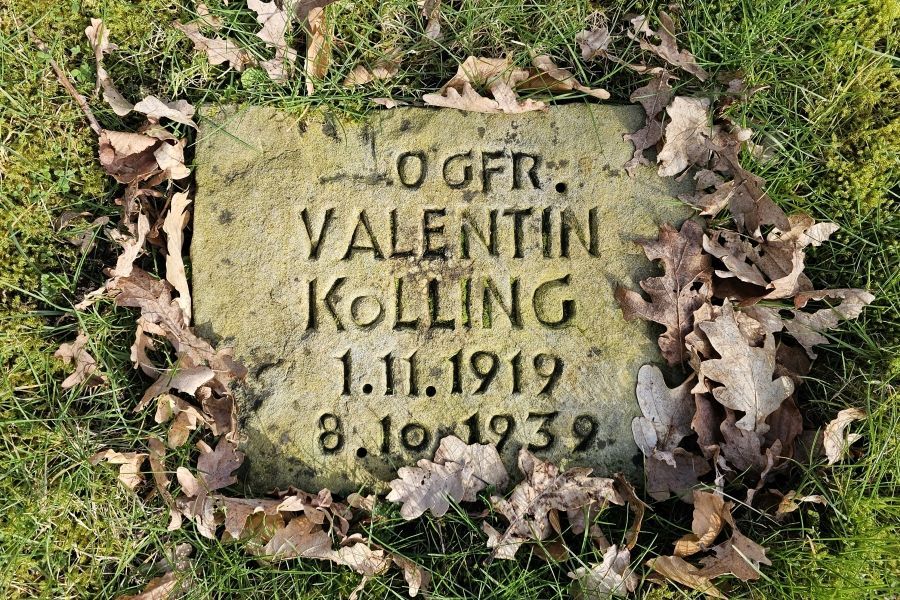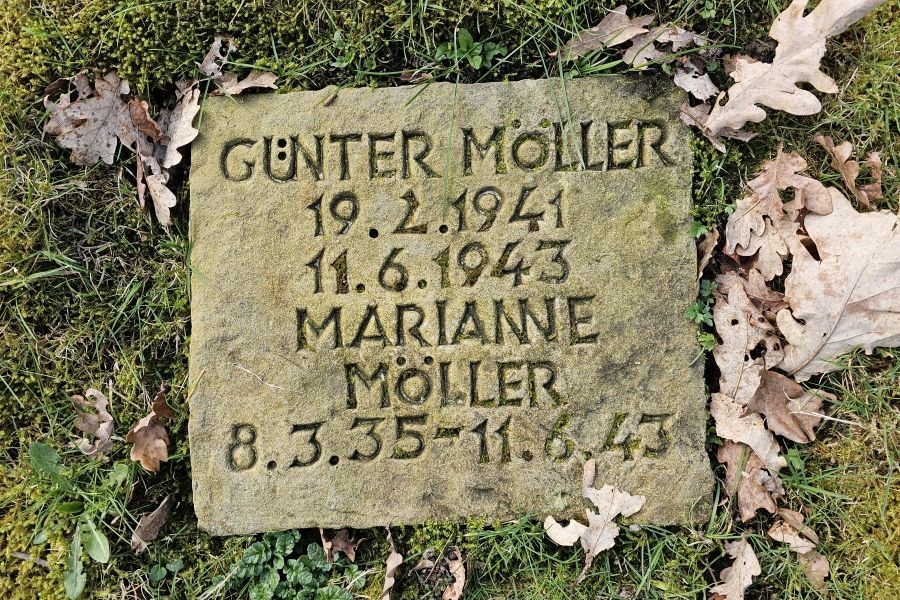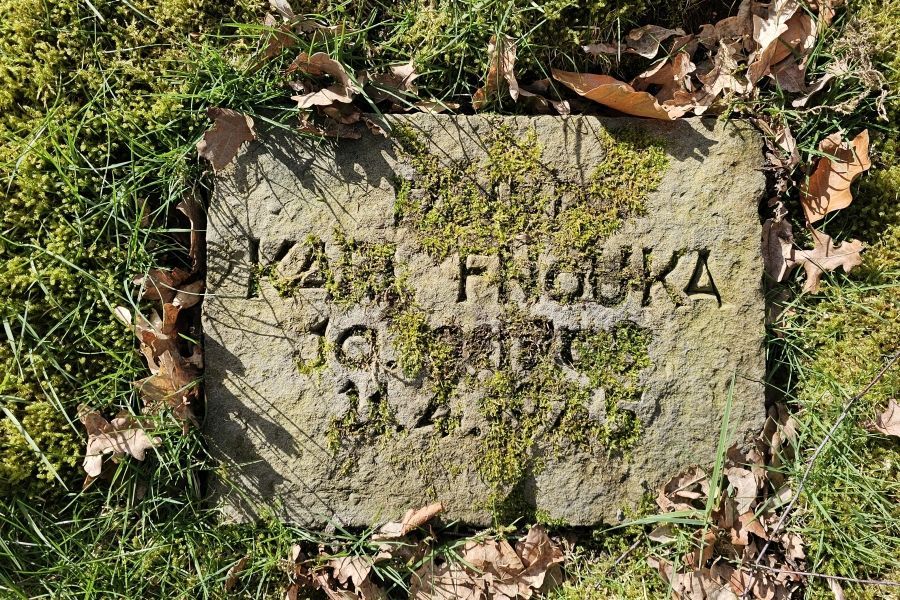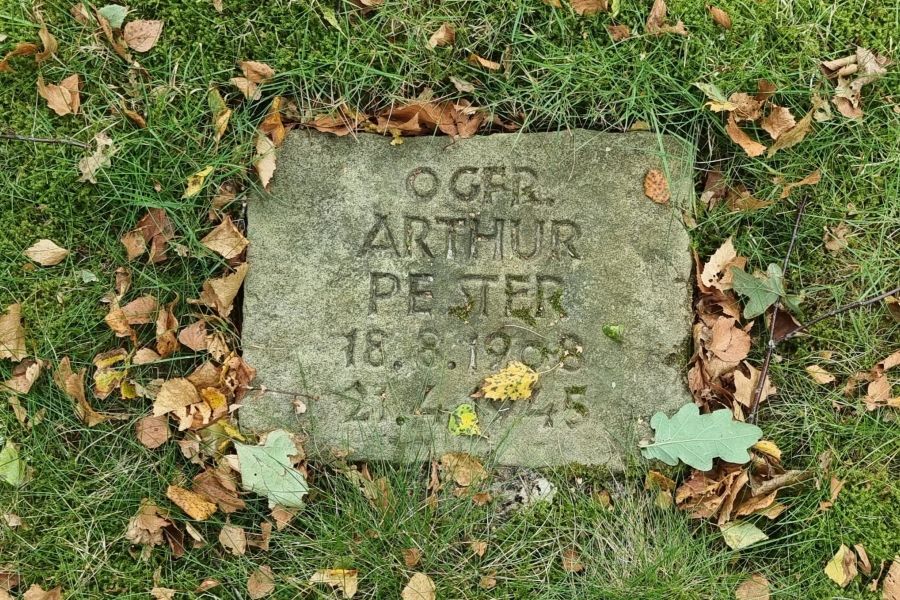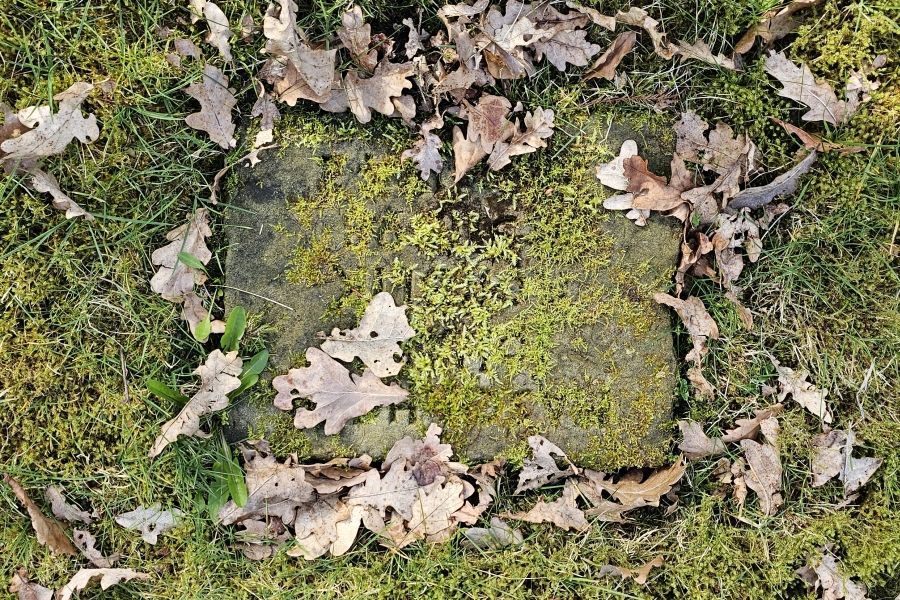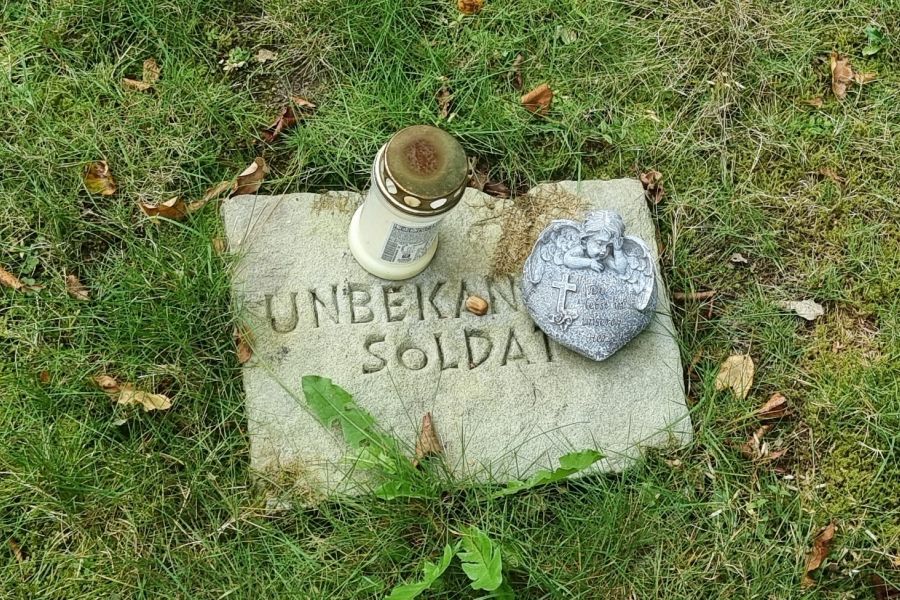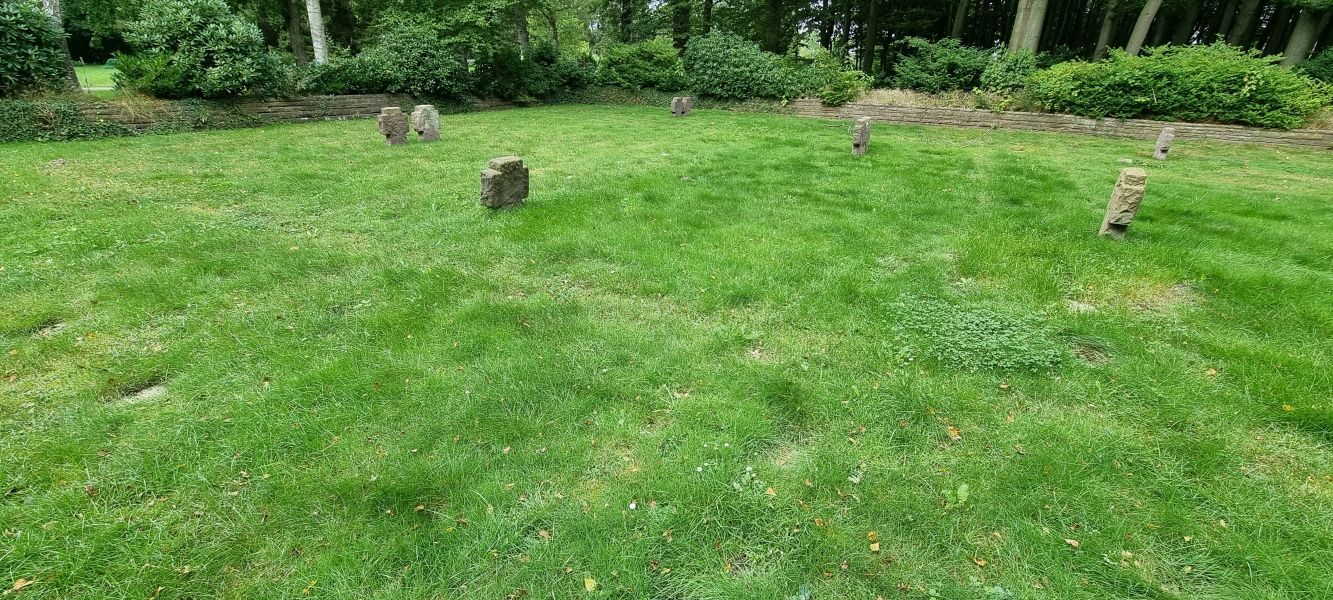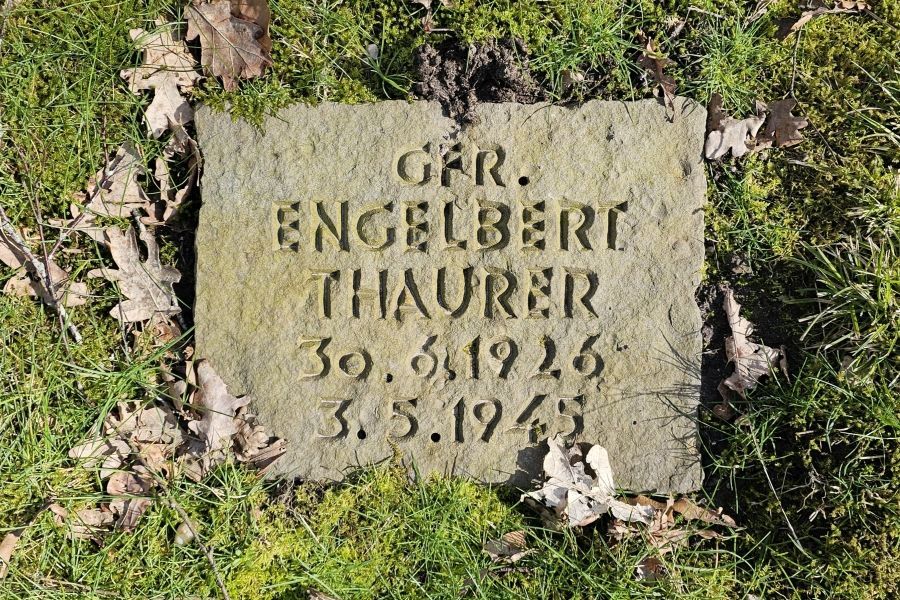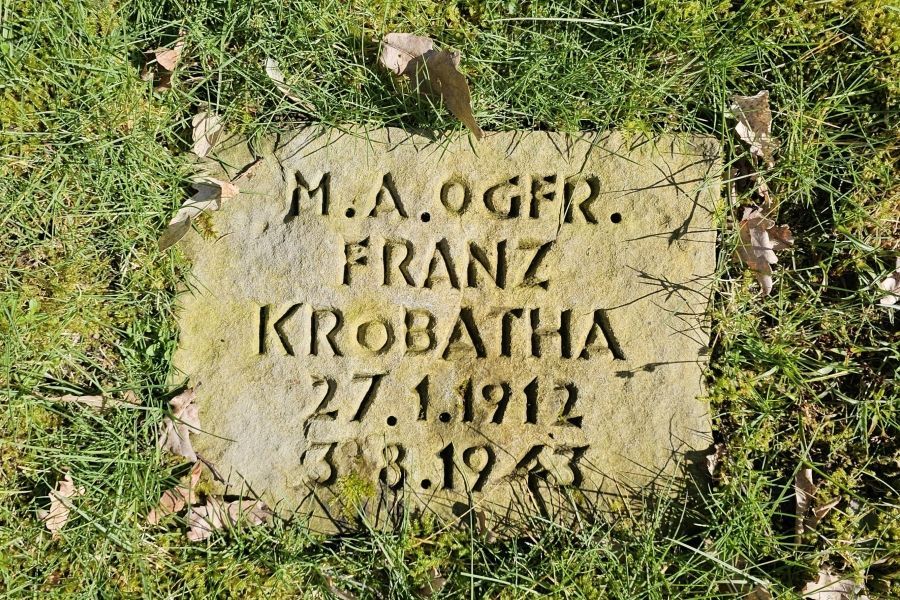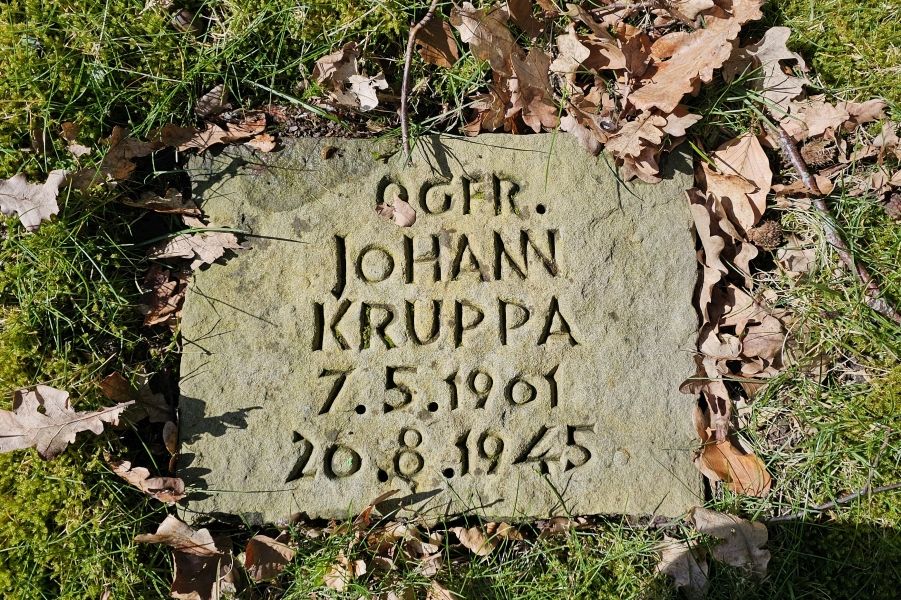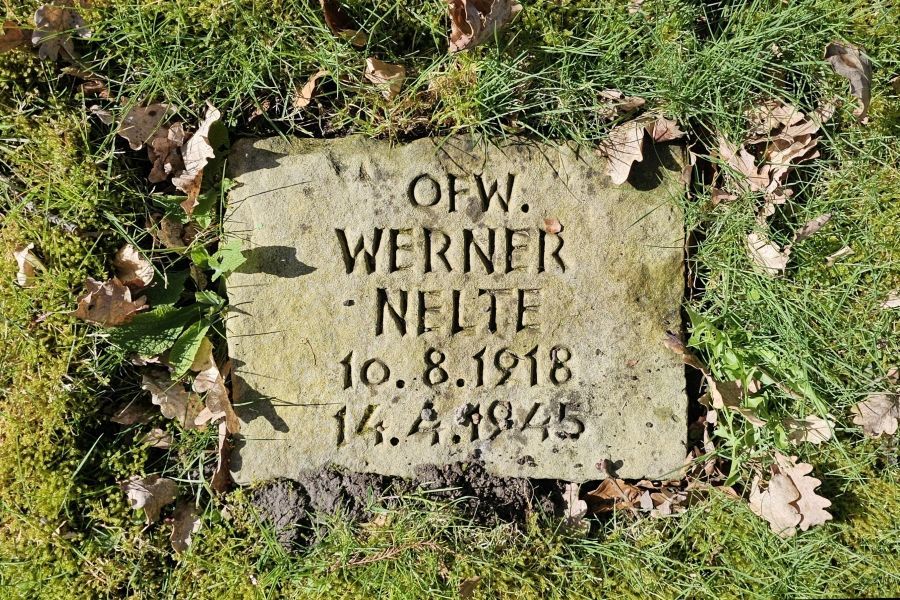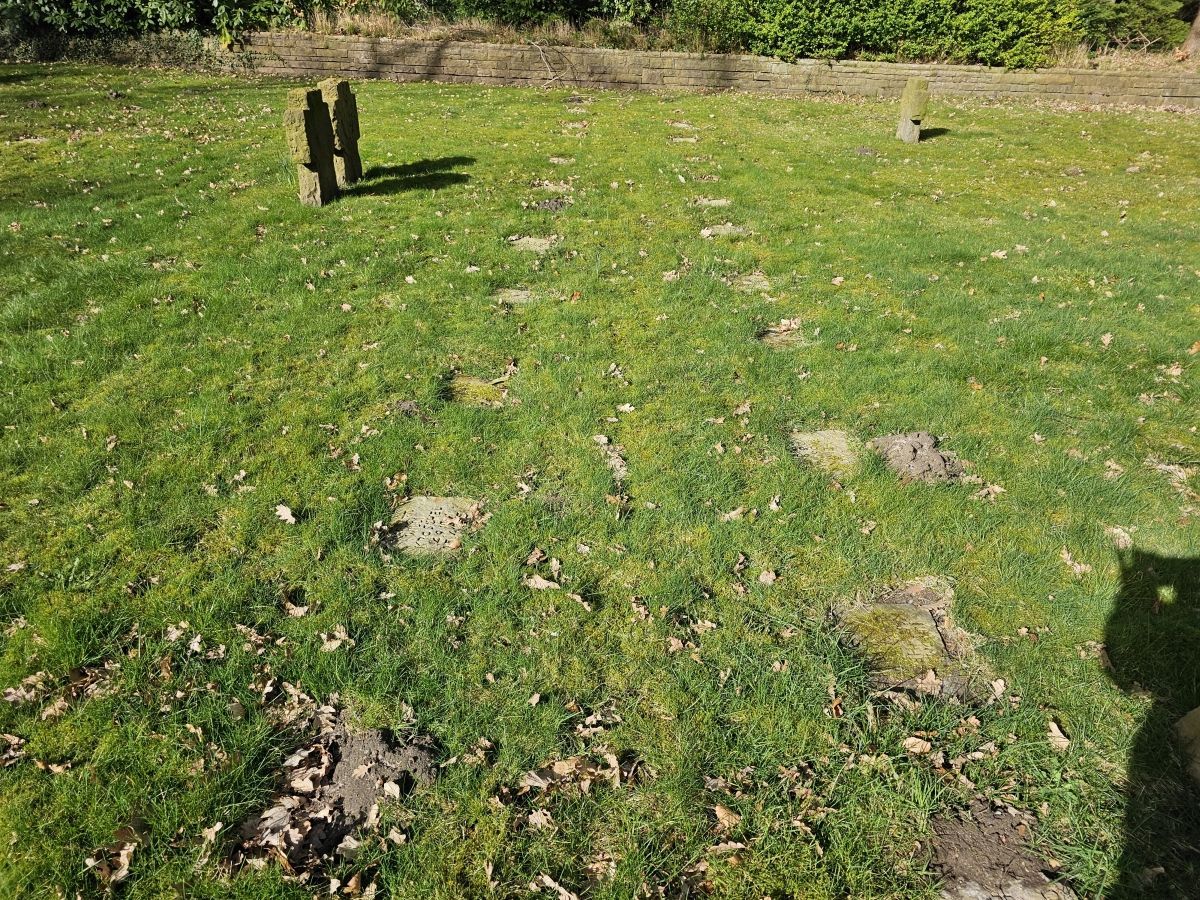
The central cemetery of the city of Cuxhaven is located in the district of Stickenbüttel in Brockeswalde. The park-like grounds also contain the memorial for those who died in war and tyranny during this period. According to the information available, a total of 467 dead from both world wars and the Nazi tyranny are buried in the war cemetery. In the central part of the cemetery, about 100 m half to the left behind the cemetery administration building, there is a large burial ground with 426 German soldiers and civilians. A total of 426 soldiers and civilian victims are buried here in individual graves, German soldiers primarily from the Navy but also from the Army, Air Force and intelligence assistants. They died throughout the war, most of them in 1944/45 during naval operations, air raids at sea and Cuxhaven, accidents or in Cuxhaven hospitals from illness or injuries. But the ship crews of the GMSA (German Mine Sweeping Administration) who died after the war during sea mine clearance work are also buried here. In addition, 14 naval personnel from the 2nd Mine Clearance Division of the German Mine Clearance Service are buried in a communal grave. They were only recovered in 1954 from the wreck of the "MS. Altenbruch", which sank on February 21, 1945 in a sea mine detonation on the Elbe near "Glameyer Stack". Some of the GMSA forces who died when the ferry Lichtwark sank (101 dead) on February 24, 1946 off Ostemünd were also buried in the Brockeswalde war cemetery. Furthermore, the civilian bomb victims, women, men and children, a total of over 80 people, who died in various Allied air raids on the naval base and the city, found their rest here.
Source: MB, German War Graves Commission
Condition of the facility in Brockeswalde 2024:
Overall, the war cemetery in Brockeswalde makes a decent impression at first glance. But if you take a closer look, you quickly see that apart from mowing the lawn and trimming the hedges, nothing has been invested in the maintenance of the site for decades. The gravestones are now several centimeters deeper than the layer of moss that has grown over decades, and in some cases many of the gravestones have even grown completely under them. In addition, many of the inscriptions are no longer legible at all because they are covered in lichen. In some places, a bit of fresh paint and anti-corrosion protection could freshen up the whole area a bit. But in general, this war cemetery needs to be completely renovated and appropriately prepared for the victims of the wars buried here. Simply beautifying this memorial is no longer enough. This state of affairs may also have been a reason why the Allies wisely reburied their dead in central cemeteries of honor. It is simply not enough to sweep once a year for Remembrance Day and then... As already mentioned, the care and maintenance of such graves is anchored in the Graves Act and is a national task. The responsibility here clearly lies with the authorities, in this case the city of Cuxhaven. The current state of the memorial is not appropriate for the dead buried there. It currently resembles a cemetery for the forgotten.MB

Inside the chapel, the fate of those who died in the sinking of the "Altenbruch" and "Lichtwark" is commemorated.
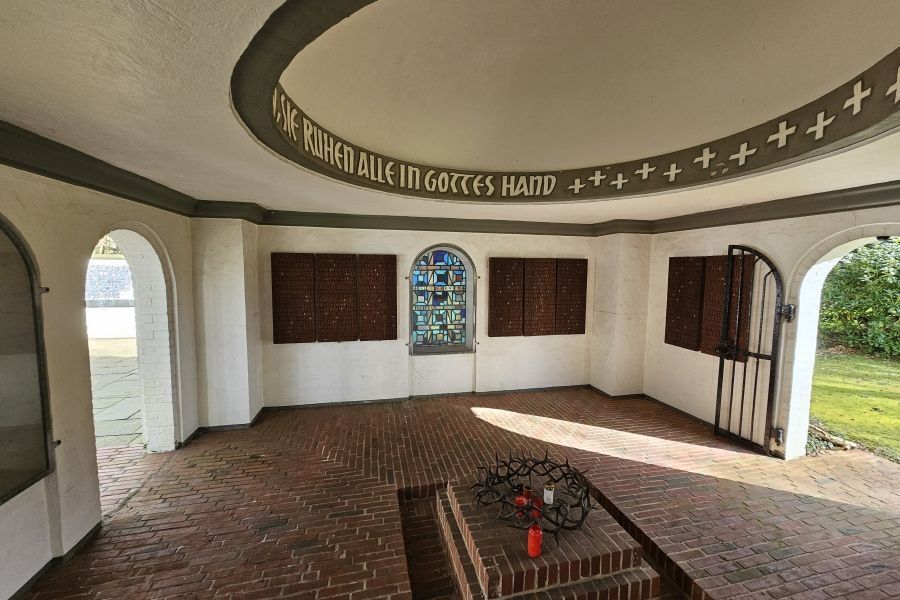
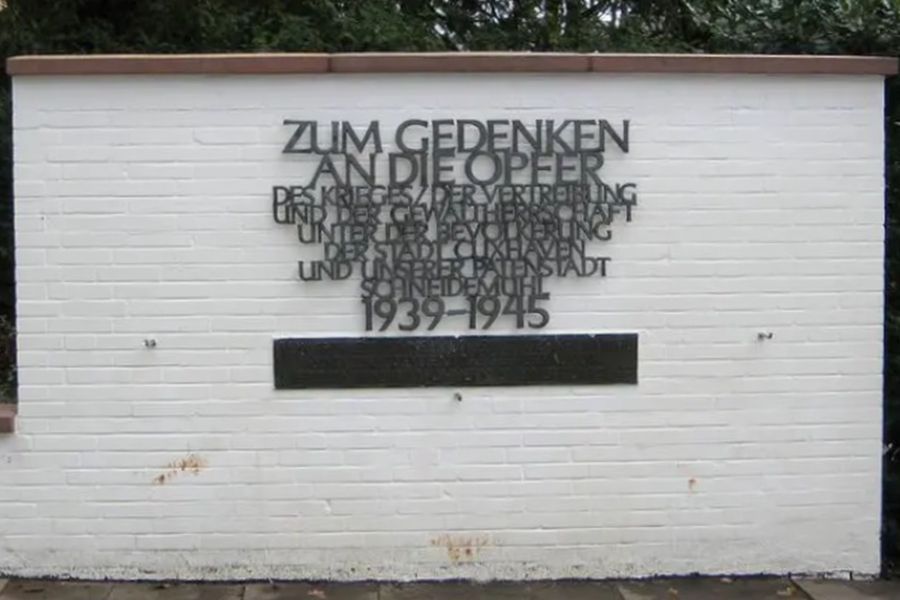

Memorial stone for the fallen soldiers from the Cuxhaven area at the end of the German-Danish War in 1864
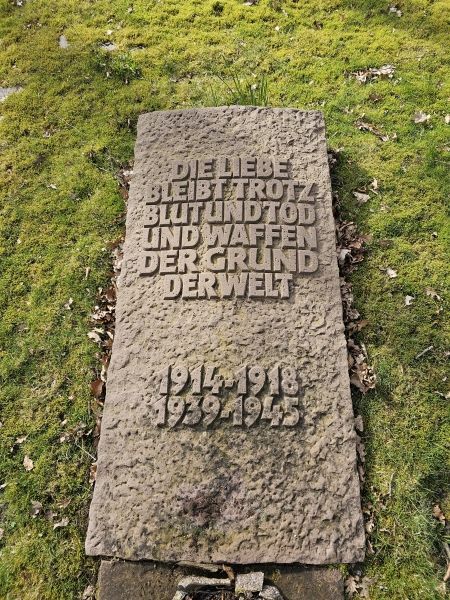
A memorial plaque on the main burial ground
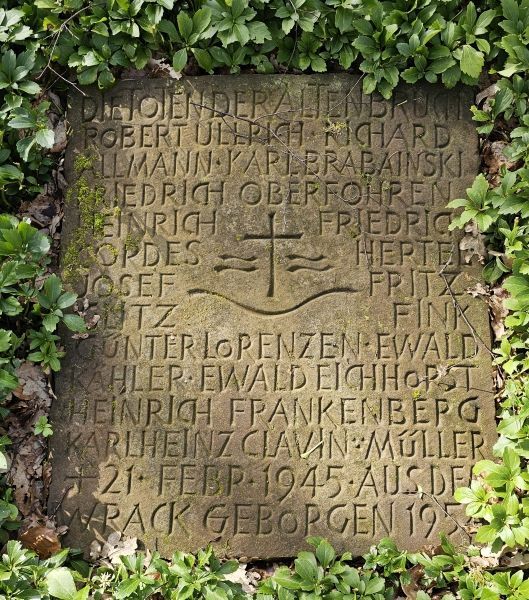
A memorial plaque to the victims of the sinking of the "Altenbruch"
To honor the dead, as a warning to the living...
An example for many on this piece of earth. Lance Corporal Valentin Kolling, he only lived to be 20 years old.
Despite the long time, there are people who remember their relatives who apparently lie here.
Karl Fnouka, resistance fighter on the island of Heligoland. Executed along with his companions Erich PJ Friedrichs, Georg E. Braun, Kurt A. Pester, Martin O. Wachtel on April 14, 1945 by the Nazi regime in Sahlenburg.
O.Gfr. Kurt Pester, resistance fighter on the island of Heligoland. Executed on April 14, 1945 by the Nazi regime.
The grave of Private Engelbert Thaurer, who was shot by firing squad on May 3, 1945. During a conversation at Bremerhaven train station, the young Tyrolean had expressed his feelings about the further course of the war, 'It would probably no longer be possible to win this way.' An uninvolved mate overheard this and reported him. Engelberth Thaurer was sentenced to death by the Cuxhaven naval court martial for undermining military morale. The court martial judge declared that a bullet would actually be too good for such a crime, and that he should be hanged. According to information, he was shot in the Cuxhaven minesweeper port, four days before the arrival of the British troops, at the age of 17. Find out more here!
Marine artilleryman Lance Corporal Franz Krobath from Styria was killed by a direct bomb hit during Operation Gomorrah in the Light Group 5 in Groden. More information "Click"
Sergeant Werner Nelte was a German fighter pilot with 2./JG. 400, whose unit was based at the Nordholz air base at the time. His aircraft was a Messerschmitt 163 "Komet" rocket fighter. Due to the ever closer British troops, his squadron was moved further north to Husum. In order to save the special fuel for missions, which had since been rationed, the aircraft were towed behind a Messerschmitt 110 in glider flight. During the takeoff from Nordholz, the towing team was attacked and shot at by a British Hawker Thyphoon. The two German aircraft were shot down and fell to the ground. Werner Nelte and the two crew members of the Me. 110 were killed. More about this here: Click!
Konstantin Stebljanko was a Russian prisoner of war who was taken to Cuxhaven for forced labor. He was apparently employed by the Marine Flak Division 214 in Cuxhaven to carry grenades. It is proven that he was admitted to the Cuxhaven Marine Hospital on May 17, 1943 with a severe shigellosis bacteria infection (dysentery). He died the same day from the suspected illness. Unlike all other prisoners of war buried in Brockeswalde, he was not buried in a separate grave. His place is in the field with the soldiers and victims of the war, presumably because he was part of the Marine Flak. He only lived to be 45 years old.




